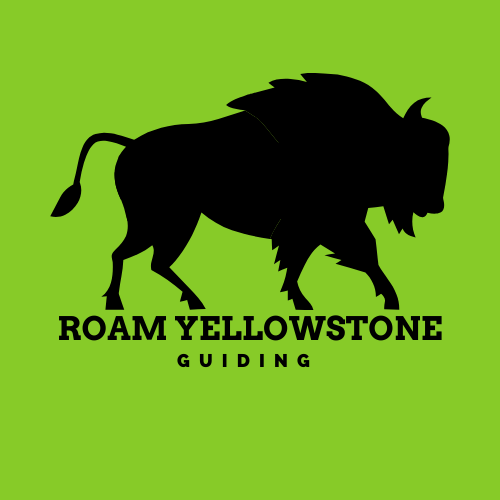Yellowstone Basics
Safety, Rules and Responsible Travel
The Law of the Land
When planning your trip to Yellowstone, you may be wondering about the legality of various ideas and activities.
Different people have all sorts of ideas about what is legal and allowable and what is not. Luckily - we don't have to guess. Below are laws that are important to know when planning your travels to Yellowstone.
Yellowstone is managed under a federal agency, therefore federal laws apply in Yellowstone. Here are a few laws specific to Yellowstone that are not always obvious to park visitors. While visiting Yellowstone, keep in mind that these laws are meant to protect you and others as well as preserve natural and cultural resources. The bullet points in bold are not allowed in Yellowstone.
These regulations help us protect park resources while also providing you a safe and enjoyable experience.
The following activities are prohibited in Yellowstone:
- Willfully remaining near or approaching wildlife, including nesting birds, within any distance that disturbs or displaces the animal.
- The animals in Yellowstone are WILD - unfortunately, not everyone realizes / respects this fact.
- You must keep a distance of 100 yards from bears and wolves and 25 yards from other animals.
- If an animal changes behavior due to your presence, you need to move even further away.
- Hunting or feeding wildlife.
- Obvious that those aren't allowed, right?
- Human food is really not meant for animals
- Improper food storage is no better than willfully deeding animals!
- Traveling off boardwalks or designated trails in hydrothermal areas.
- These areas have fragile grounds that can break from the weight of a person. Below this fragile ground is extremely hot water or steam. Severe burns and gruesome deaths have occurred from illegal wandering through hydrothermal areas in Yellowstone.
- Don't become a statistic; stay in the boardwalks and trails in hydrothermal areas.
- Throwing anything into thermal features.
- This is also known as littering.
- Some geysers in Yellowstone have been permanently altered due to decades of tourists throwing rocks, coins, etc. into them. They will likely never erupt again.
- See Minute Geyser in Norris Geyser Basin
- Swimming in hot springs.
- This law helps keep people alive - please do not attempt to swim in a Yellowstone Hot Spring, nobody wants to see that aftermath.
- Many hydrothermal features in Yellowstone are scalding hot (commonly more than 160°F) or nearly as acidic as battery acid (pH 1-2)...or BOTH.
- If you do want to swim in thermal waters, there are a few ways to do that!
- Removing or possessing natural or cultural resources (such as wildflowers, antlers, rocks, and arrowheads).
- Many people are tempted to take cool things they find in Yellowstone. Not only is this illegal, it takes away from everyone else for the entire future of Yellowstone.
- Consider this: Yellowstone sees around 4,500,000 visitors annually with more each year. If every person took just one cool thing, it wouldn't be long before every interesting artifact was gone. At best, most rocks and other artifacts people take end up as a neat paperweight, at worst, they are stashed in a basement closet, never to inspire visitors to Yellowstone again.
- Smoking is prohibited in geyser basins or on trails. There is no smoking in buildings or within 25 feet of building entrances.
- Please respect others and do not start a forest fire.
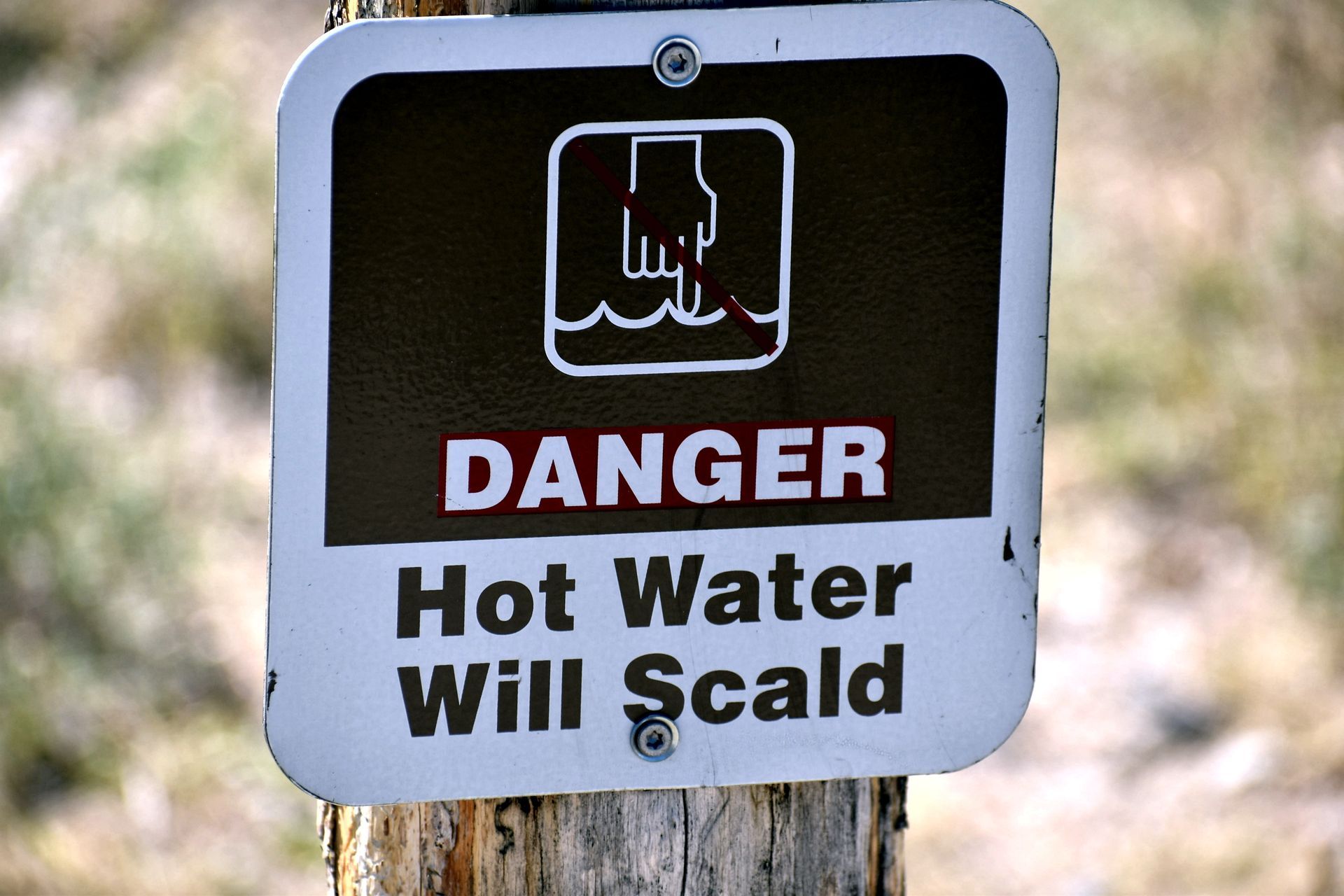
- Leaving detachable side mirrors attached when not pulling trailers.
- Take those mirror extenders off if you don't need them!
- The roads in Yellowstone can be narrow and winding, meaning unwarranted wide mirrors are very dangerous for cyclists and oncoming vehicles.
- Traveling off-road by vehicle or bicycle.
- The majority of Yellowstone is managed as a non mechanized area.
- Using car and bikes in areas not design for them can create a ton of damage and a multitude of other issues.
- However, the park service considers many different user groups.
- There are some awesome trails that can be biked (non single track) within Yellowstone
- There are scenic gravel roads within Yellowstone
- As a mountain biker and someone who enjoys getting 'way out there', I have found plenty of places to ride wild single track and drive remote roads in the Yellowstone area.
- Camping outside of designated areas.
- Inside Yellowstone, you can only camp in a designated site or backcountry site - both of which require payment and permitting.
- Boondocking or dispersed camping is not allowed.
- Spotlighting wildlife (viewing with lights).
- This activity can really disrupt wildlife behavior and defeat the purpose of the national park.
- Respect the animals
- Imitating elk calls or using buglers. Imitating wolf howls.
- This can also disrupt animals and wolf hunts.
- I've even heard a story of a photographer, intending to call in an elk by rattling antlers, accidentally calling in a grizzly bear...to his grisly demise...
- Using electronic equipment capable of tracking wildlife
- If you want to see wildlife in Yellowstone, you have to put in the time and effort to get out and observe them in legal ways.
- Launching, landing, or operating unmanned aircraft (drones) on lands and waters.
- While we all have seen incredible footage from a drone, that doesn't mean we want to ear them in the wilderness.
- Drones have been crashed into Grand Prismatic Spring, used to harass animals and have an effect of 'disturbing the peace' - they are now illegal to use in Yellowstone.
- If you want to use them, find areas where it is legal outside of Yellowstone, where there are no animals or people around and where it will not be lost.
The boldened text above is take directly and verbatim from the Yellowstone National Park website. I listed the rules here to ensure consistency for visitors. Again, these rules are meant to protect us from our own curiosities as well as promote the highest levels of conservation.
Breaking any of these rules is not without consequence; park visitors are commonly fined hundreds of dollars, spend time in jail and may be banned from US national parks temporarily or for life for some offenses. I have seen people spend a few hundred bucks on court fees and around a week in jail for trespassing on hydrothermal grounds - the park is serious about the law. Keep a cool head; let logic prevail and obey the rules.
Here are a few more answers to common questions that I think are worth noting.
Can I bring a firearm into Yellowstone?
- Yes, if you are legally allowed to poses a firearm you can bring it into the park.
- You are NOT allowed to discharge that firearm.
- Many people have the idea that in bear country, you need a bear gun. This is not true.
- Even if you hike with a gun in Yellowstone, you are not allowed to use it for defense against a bear or other animal.
- Statistically, there are far better bets to ensure survival of a bear attack and even more ways to avoid one in the first place.
Can I bring my dog (or other pet) into Yellowstone?
- Yes, but...
- Pets cannot be left unattended or tied up anywhere. They can be left with shade, food and water for very short periods (it gets hot in summer and cold in winter).
- They must be on a 6 foot or less leash, accompanied by a person and withing 100 feet of a road, parking lot or campsite if they are out of a vehicle.
- They are not allowed on any boardwalks or trails.
- You MUST pick up their waste.
- There are no exceptions for small animals that are normally carried.
- These rules protect your animals and the wild animals. Pets have been killed by predators, trampled by bison, burned in hot springs and have spread disease to wild animals. We just want to avoid all of that bad stuff.
- There are special rules for certain types of service dogs in Yellowstone.
Can I hike off trail in Yellowstone?
- Sometimes
- Some areas are always closed, some are closed for parts of the year and random closures can happen for a variety of reasons.
- Traveling off trails and boardwalks in hydrothermal areas is always illegal.
- Always use existing trails whenever possible and do not make any new trails
- Yellowstone has a number of "bear management areas" - areas that are closed during certain times of year to provide bears uninterrupted habitat.
- Some areas may close due to trail conditions, carcasses on/near trails or other unforeseen issues.
- Some areas, such as wetlands and alpine environments require special attention to travel in or near without causing damage.
- The park service is pretty good about making it known with signage if an area is closed but it is always wise to research ahead of time and avoid last minute itinerary changes.
It is rarely necessary to travel off trails in Yellowstone; again, never make new trails.
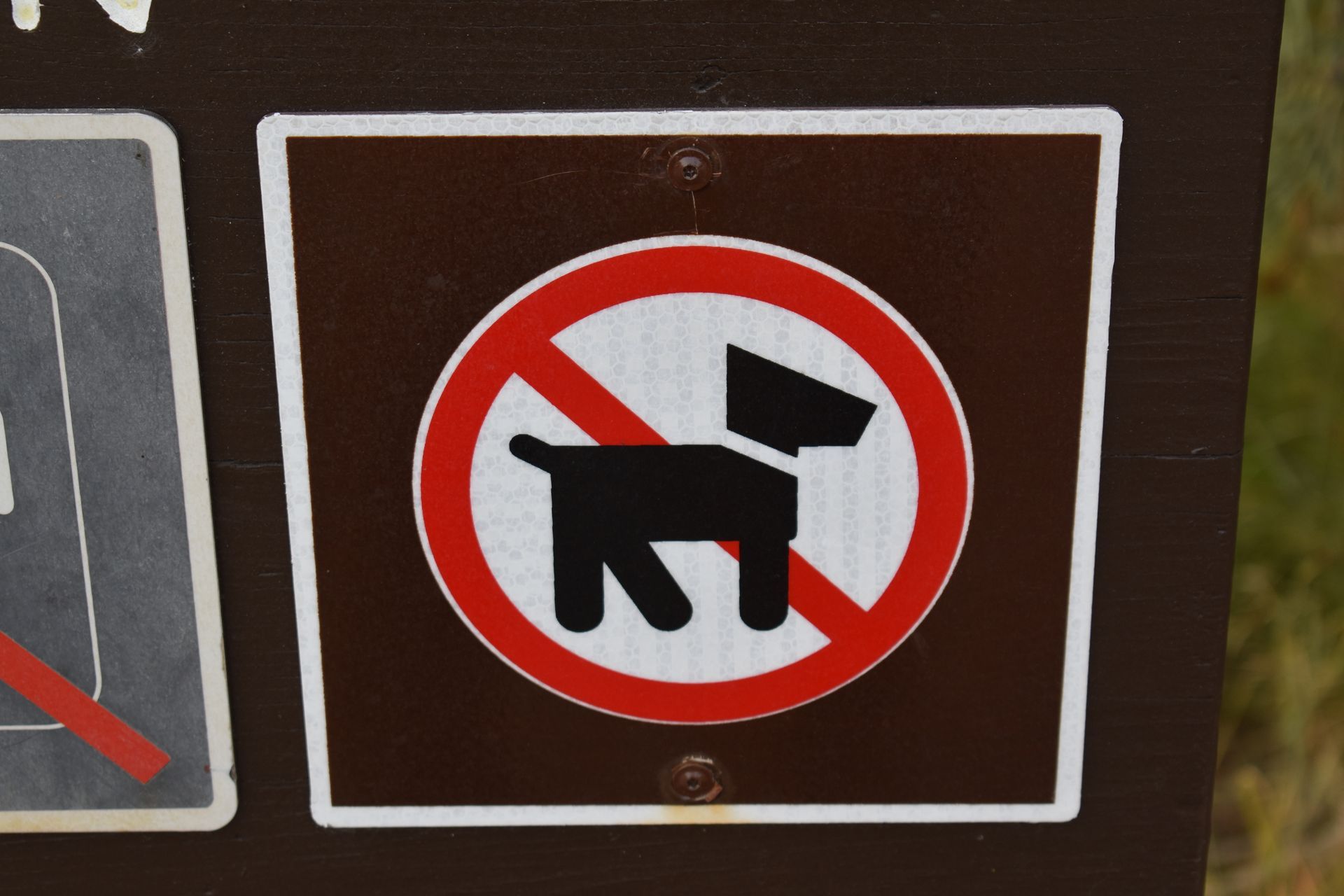
The park's full rules and regulations can be downloaded here: 2024 Yellowstone Superintendent's Compendium
Driving in Yellowstone

Traffic laws apply in Yellowstone like an where else in the US.
Driving is statistically the most dangerous thing you will do during your vacation to Yellowstone. Park roads are generally good but you can expect windy mountain roads, steep grades, sharp turns, heavy traffic, animals on roads, unmarked frost heaves and potholes, construction, closures due to weather and any other "act of god".
Stop only in pullouts, obey speed limits, etc. While this may seem obvious, some folks' good driving habits go straight out the window as soon as they see so much as a chipmunk. Keep your cool and respect other drivers; this goes a long way toward making everyone's trip go smoothly.
- Only stop in pullouts
- Speed limits are generally 45mph, unless otherwise posted
- Many scenic drives are one way and cannot be used by vehicles with trailers or busses
- Vehicles wider the 8.5 feet or longer than 75 feet total are not allowed (and you'd be very brave (read: a fool) to try to take that through Yellowstone!)
Be a courteous driver
Keeping others in mind while driving in Yellowstone can make your drive less stressful and help others out.
- Use pullouts
- If a faster vehicle is following closely behind, I find it better to use a pullout and let them by rather than forcing them to pass.
- Don't stop in the middle of the road.
- Plan ahead
- Know where you are going and what turns to make
- Keep a longer than normal following distance - give yourself time to react.
- People may stop quickly for animals
- Vehicles may be stopped around a sharp corner
- Road conditions can change quickly
Roads open and close throughout the year due to snow and winter weather.
The only road open year round in Yellowstone is the road from Gardiner to Cooke City. All other roads have different opening and closing dates.
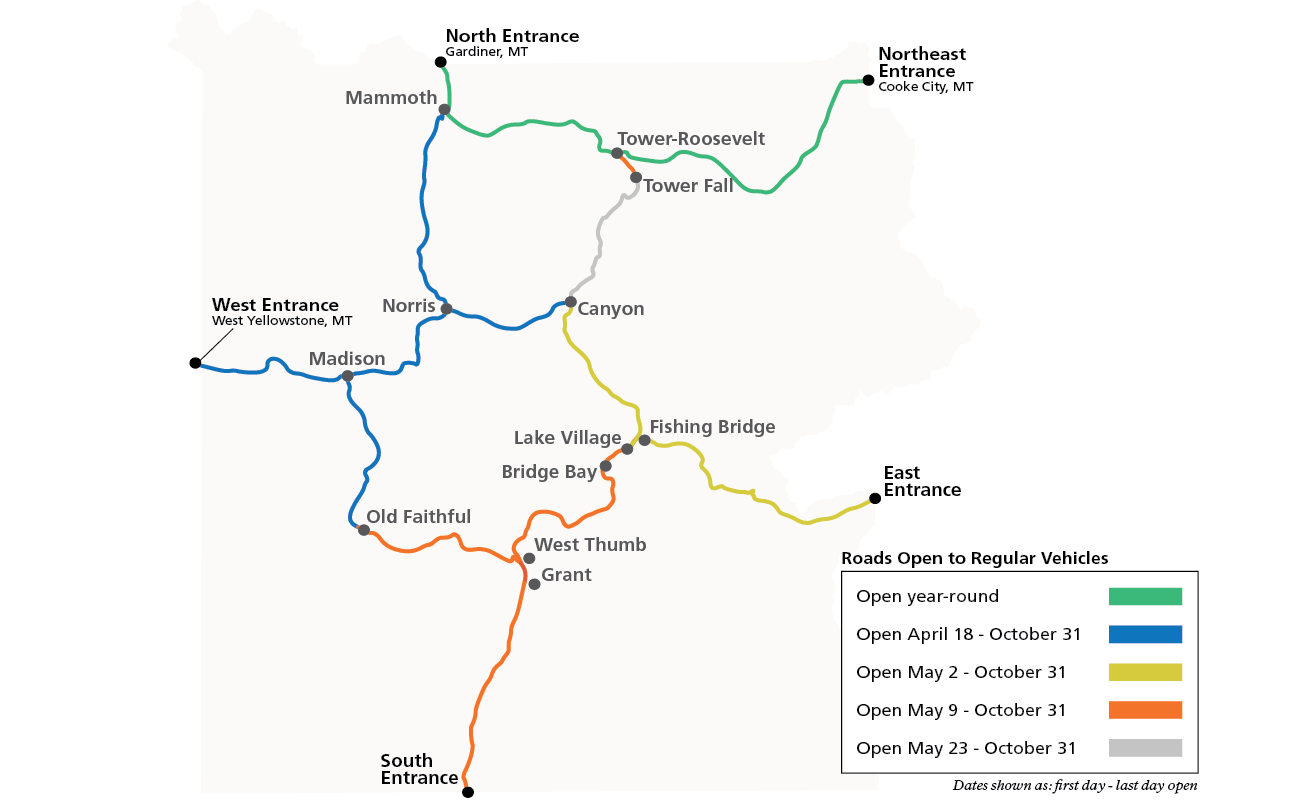
Driving In Yellowstone In Winter
Driving in Yellowstone during winter comes with it's own set of challenges, but its generally not to difficult. The park maintains roads well, plowing snow often and laying traction gravel on the roads.
However, winter weather can be a major force for drivers to contend with and conditions can change rapidly.
During winter, I always have extra layers, gloves, food and water in the vehicle. Cars break down, you can get stuck in a ditch, you can run out of gas or anu number of other things can keep you stuck. Responsible travel means being as self sufficient as you can and preparing for your survival if things go wrong. If you get stuck without service in a storm, you'll really appreciate those few extra items you threw in the vehicle. During some conditions, it may not be possible to get help for an extended period of time.
- Tips for winter driving in Yellowstone
- Keep a long following distance
- Drive slow when conditions are changing
- Take turns slower than you normally do
- When pulling into traffic, give oncoming vehicles more room than normal
- Watch for ice in shaded areas
- Watch for animals on the roads
If I see animals while driving, can I stop to look at them?
There is a good chance you will see animals from the road way. However, you cannot stop in the middle of the road to watch animals.
Even though Yellowstone is a national park, people work and commute here. Some people are travelling long distances and some have emergencies. Stopping in the road can create a big traffic jam and could be really bad for some people who need to get from A to B as there is no good way to pass a line of cars stopped in the road.
If you want to watch animals:
- Find a pullout to stop in
- Pull over on the side of the road
- All 4 wheels must be over the white line
- If this isn't possible, do not stop there
Don't get out of the vehicle if animals are closer than you are legally allowed to be.
Be very cautious getting out on the drivers side into traffic.
If you are stopped to look at animals, there's a good chance the other drivers on the road are looking a those animals - and not in front of them - while driving.
What if there are bison (or other animals) in the road?
This happens quite often and can be a really cool experience! There are a lot of bison in Yellowstone and much of their habitat coincides with the placement of our roadways. In addition, bison use roads in winter as they are far easier to walk on than through deep snow. Consequently, there is a good chance you will see bison near the road or even be stopped by a bison on the road.
If your lane is blocked by bison:
Do
- Stop and wait
- Be patient with animals and other drivers
- Assess the situation. If feasible and safe, you may attempt a slow, safe pass of a stopped vehicle or animal in the roadway.
- Use good judgement
- You are 100% legally responsible and liable anytime your vehicle is in any portion of the oncoming lane of traffic
Do NOT
- Get out of your vehicle
- Haze bison
- Honk your horn
- Drive sporadically
- Cross lanes with on-coming traffic
- Pass other vehicles in an unsafe manner
If there are bison on the side of the road, slow down in case they walk into the road but do not stop and "rubberneck". This creates a chain of people slamming on the breaks, sometimes for miles behind you, and starts an infamous "Bison Jam". Just slowly drive past; you will very likely get another great chance to see bison away from roads during your trip through the park.
Driving at Night
Driving at night in Yellowstone is generally something to avoid. However, it can be done with care.
The main cause for concern while driving at night is animals on the roadway. I don't think there is a passenger vehicle made, not even in America, that would hold up well to a collision with a 2,000lb bison. Bison are dark colored, meaning hard to spot, and don't move out of the way of vehicles quickly.
If you are driving at night:
- Take it slow and keep a sharp eye.
- Don't drive tired or distracted.
- Use your brights but turn them off for oncoming vehicles.

Sharing The Park / Spreading Out and Avoiding Crowds
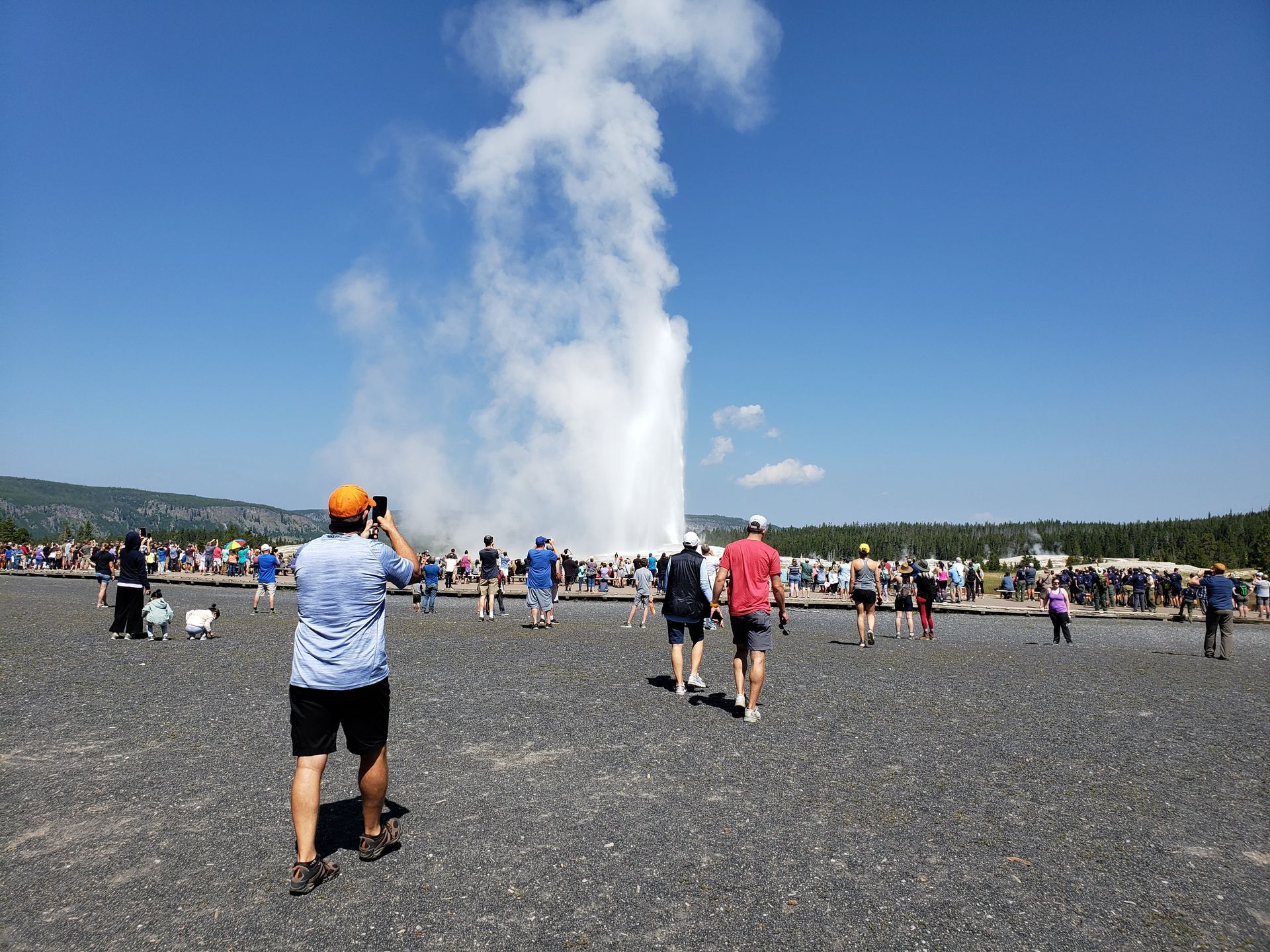
Yellowstone averages around 4.5 million visitors each year, mostly during the summer.
Yellowstone sees more and more visitors year over year. Don't be deterred; there are a few ways to maintain sanity during the busiest days and find that solitude in nature you hope for when visiting wild areas.
During my years guiding in Yellowstone I saw many types of visitors, some more respectful than others. That said, most people have similar goals when visiting Yellowstone; mainly, to connect with the wild and to experience once in a lifetime attractions.
When planning a Yellowstone trip, many people have the same idea. They allow themselves about 3 days, go during a similar time of year start at the same time of day and have a similar "hit list" of sights to see / experiences to have.
To make your experience more unique, you have to plan differently than the majority of people.
Although there are always trade-offs, this can be done in a few different ways:
- Give yourself more time in the park.
- Avoid visiting during the busiest months.
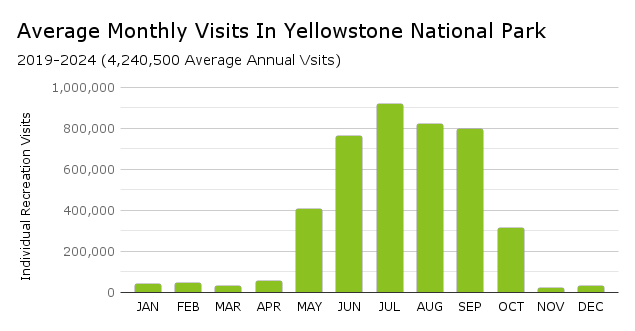
- Avoid visiting during the busiest time of day.
- This varies throughout the year, but generally 7am to 5 pm is the busy time during summer.
- Avoid visiting the most famous sights and areas.

To be clear, I'm not saying you need to visit during November, start at 6 am and choose an obscure hike to avoid crowds - although that would certainly do it.
Summer is the most popular time of year, 7am-5pm is the most popular time of day and famous sights are famous all for good reasons!
I suggest compromising on one or maybe two of these points. In addition, giving yourself more time (5-7 days is great) allows you to see the famous sights and find special, serene places.
- If you are visiting during summer, start early or late and/or avoid famous sights.
- If you don't want to wake up super early on your vacation, choose an off season to visit such as mid May or mid October
- Just realize that this means weather may be cool and unpredictable, trails muddier or snow covered and fewer services open.
- If you aren't an early riser and want to come during summer, save the famous sights for the late afternoon / evening.
- The summer days here are long
- Avoid certain entrances from about 7:30am - 10:30am during peak season or you will start your day off in traffic.
If you really want to get away from folks and se the wild Yellowstone, consider this commonly quoted statistic: 90% of visitors to Yellowstone don't go more than a mile from the roads.
If you are capable and have experience, consider taking a hike to supplement your Yellowstone trip and see what the place is really about.
Sometimes, it just takes patience.
Even with an early start or visiting during the off season or even hiking a few miles in, its possible to find some crowds in Yellowstone. But, considering the park is 2.2 million acres in size, there are many more possibilities for peace and quiet than there are for crowding.
If your plan for the the day has something very time dependent, such as starting for a long hike, meeting for a tour, etc., start early so you have plenty of time. I can't remember how many times I sat at a trailhead waiting for clients before our hike just to see them speeding in late with a stressed out driver. For some activities, being delayed can really change the plans for the day, so give yourself plenty of time to make it through the park.
You may see people doing things you deem idiotic.
Although most people are respectful and appreciative, some people do not understand what "wild" means or that laws in Yellowstone are not just suggestions. People get to close to animals, they touch hot water, they stop in the middle of the road, they play music on trails, etc.
If someone is causing a scene, you can try to inform them but I would suggest avoiding being drug into their mess and simply reporting them to park authorities if they are breaking laws.
The worst thing you can do when a person or group is breaking rules (like crowding animals) is joining in. Simply move on and let the riffraff decide their fate.
Mutual Respect
Most people in Yellowstone just want to have a good time. A bit of respect and consideration for others can go a long way.
Being Prepared Will Make Your Trip Better
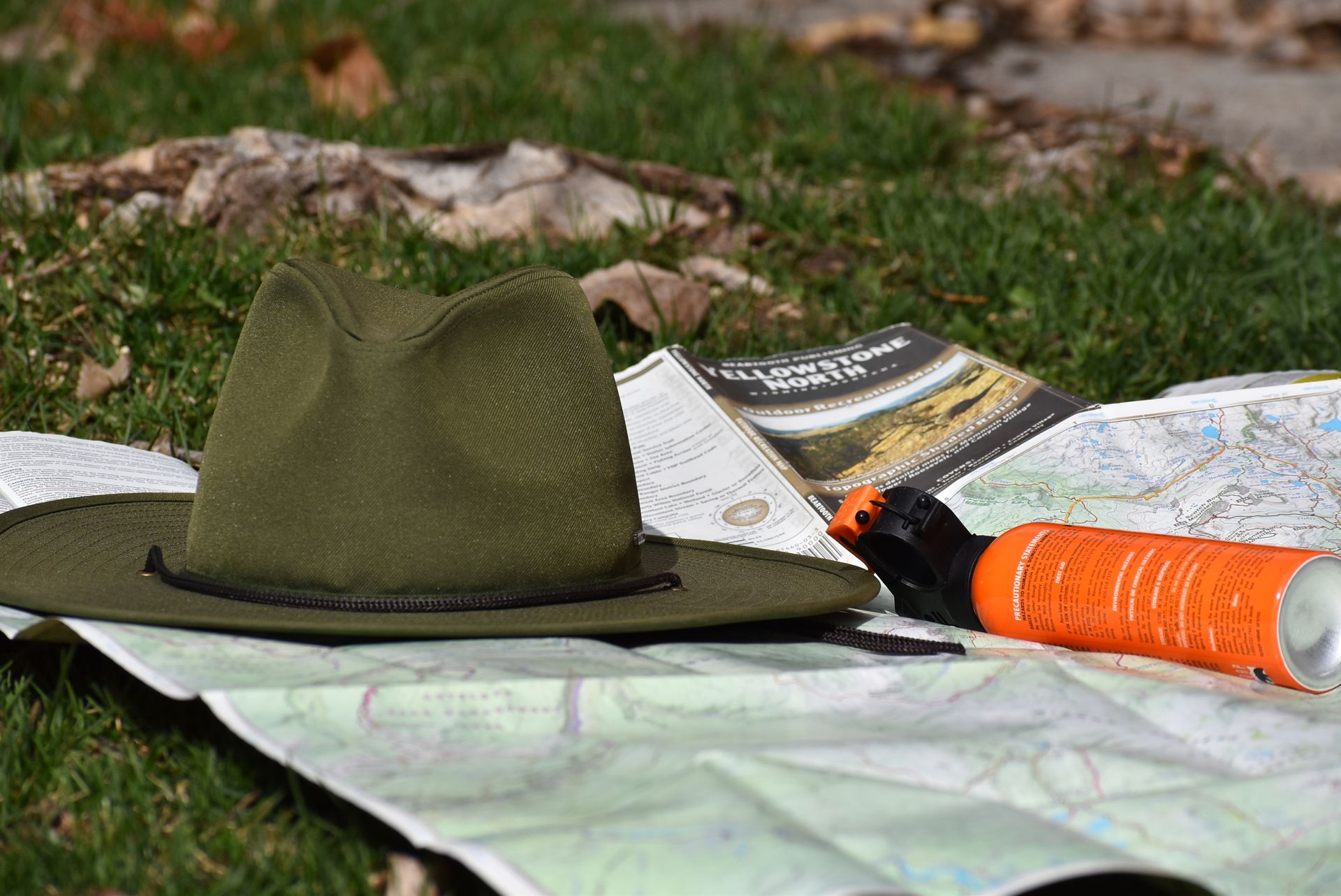
If you are going to Yellowstone on your own - not hiring a guide - there are a few things that you must plan ahead for.
Depending on the activities you have planned for the day, there are many different things that may be needed. However, there are a few things you will need to have and prepare for no matter what you're doing.
Park Pass
You will need a pass to get into Yellowstone. This can be an annual pass, a prepurchased pass or you can buy one at the entrance station.
If you already purchased a pass, make sure to bring it with you.
Clothing
Wearing the right clothes for the day can make you far more comfortable.
Bring comfortable and broken in boots if you plan to hike, as well as comfortable shoes for the car. Dress for the weather but always bring extra layers and a rain coat. In summer, I normally wear light synthetic pants, a moisture wicking shirt and/or long sleeve sun shirt.
An umbrella can be sweet if you are going to be out in the rain.
Food and Drinks
It's not exactly convenient to get food inside Yellowstone and it can take a lot of time from your day. I recommend bringing a picnic style lunch, plenty of snacks and a variety of drinks for the day. Hand sanitizer and a table cloth for a picnic table are great additions.
Don't forget a trash bag - little bits of plastic can easily blow away. These can end up in rivers, hydrothermal areas or the guts of some poor wild animal. There are trash cans throughout the park but sometimes they can be full and require you to pack it with you.
Human Waste
There are restrooms throughout the park but they are not always there when you need one. Pack along some toilet paper, wet wipes, a "wag bag", hand sanitizer and a large zip lock bag.
The zip lock is for toilet paper - do not leave that stuff on the ground. The wag bag is for #2; if you're on a trail and nature calls, find a secluded area then pack it out. Wag bags are far preferable to cat holes since those require specific circumstances to be viable and actually responsible; most people do not know how to make one correctly and for day hikes, it isn't necessary. Human waste and toilet paper piles are some of the worst things to stumble across while out in the woods - don't leave one.
Just to note: none of that except the toilet paper can go in a pit toilet.
Vehicle
Fill up the tank before heading into Yellowstone. There aren't a lot of gas stations, its expensive in the park and it would really suck to run out of gas.
Keep extra layers, a good spare tire, a headlamp, extra water and phone charger in the car.
Sun Protection
Do not skip the sunscreen, sun shirts, SPF lip balm, hats and glasses. Most of Yellowstone is at 8,000' in elevation and the UV index is high during summer. Getting burnt early on your trip can really reduce your overall enjoyment.
Animals
To give yourself the best chance to see animals, I recommend binoculars and a spotting scope if you can buy / rent / borrow one. A camera with a telephoto lens is a great addition as well.
Many people are tempted to slowly approach animals to get a better look and a better photo with their phones. As we know, this is generally a terrible idea and can go from being illegal to life threatening in a split second.
Having lenses to view animals up close from a distance is a game changer for seeing animals in the parks. If wildlife are one of the main draws for you, consider these items mandatory.
In addition, bring a can of bear spray and know how to use it if you plan to hike even a short distance from the vehicle. It can be rented in some areas such as the canyon visitor center.
Emergency / Medical
Bring a medical kit that can cover basic injuries as well as any medications or hygienic products that are necessary for you or those under your care.
A satellite messenger is a great idea if you plan to go far from the car or into remote areas. Cell phones are not reliable, coverage in Yellowstone is very limited.
Yellowstone Basics Packing List
- Park Pass
- Backpack
- Food and Drink
- Plenty of water (2 liters per person minimum)
- Lunch, snacks, soft drinks
- A cooler and ice
- Trash bag
- Table Cloth
- Human Waste
- Toilet paper
- Hand Sanitizer
- Wipes
- Wag Bag
- Animals
- Binoculars and/or Spotting Scope and/or Telephoto lens and Camera
- Bear Spray
- Vehicle
- Full tank of gas
- Spare tire
- Roadside emergency kit
- Extra Layers
- Phone Charger
- Extra Water
- Map of the Park
- They will give you one at the entrance station
- Emergency
- Medication
- Medical Kit
- Satellite Messenger Phone
- Sun Protection
- Sunscreen
- Sun Shirt / sun hoodie
- Sun Hat
- Sunglasses
- Clothing
- Comfortable boots / shoes
- Wool socks
- Car shoes (crocs, flip flops ,slides)
- Light Coat
- Puffy Coat (for cooler weather)
- Rain Coat / shell jacket
Cell service is very limited in Yellowstone, take care of important calls before heading into the park.
Yellowstone can be hot and dry during the summer, start the day well hydrated to better cope with the high altitude and dry air.
This list is for a basic day in Yellowstone and should cover your bases. Keep in mind that going for longer hikes requires a bit more planning and prep to make sure your day goes well.
Low Impact and Responsible Travel

Low Impact and Responsible Travel can be summed up as the following:
- Leave No Trace of your recreation
- Obey all rules and regulations
- Show humility and treat others with respect
It is always our individual responsibility to plan ahead and minimize our impact when visiting wild places like Yellowstone. It takes relatively few people to impact a wild area in a negative way, making it that much more important to do our research before heading out.
Use the information outlined on this page and throughout this website to plan your travels and make sure you are following all rules. With a bit of forethought and preparation, it is easy to travel in Yellowstone safely and responsibly. Some things are out of our control but more often than not, various incidents / eventualities can be predicted and planned for.
Yellowstone is a shared resource and the most intact ecosystem of it's type left on the planet. All visitors must do their part to conserve the resource we collectively share in Yellowstone.
The main resource in Yellowstone is "Wilderness" - there is so much captured in that term that it is hard to describe. Once you go to Yellowstone, it's hard not to gain a deep respect for what was saved for us by previous generations.
Let's all do our part to ensure Yellowstone's wilderness is preserved for all future generations.
# Outline for Yellowstone Travel Rules and Responsible Travel
Over my years guiding and recreating in Yellowstone, I've had innumerous amazing days in the park; seeing sights and sharing with others a connectedness to nature that is truly unique to the park. I've also witnessed behavior of others that put people in danger, disturbs the natural setting, and creates an air of anger for many folks around.
In addition to sharingmy love for the great outdoors, part of my goal with the information I'm sharing here is to inform travelers and promote responsible recreation; with the goal being to help others enjoy Yellowstone while leaving the land and its inhabitants, as well as other travels, undisturbed.
Yellowstone is the world's first national park, established in 1872, and the park service has refined the management of the area continuously over this time. Rules have changed, bettering human safety and resource conservation, many times.
Basic Rules of the park
Driving
Traffic Laws Apply in Yellowstone Like an where else in the US
Driving is statistically the most dangerous thing you will do during your vacation to Yellowstone. Stop only in pullouts, obey speed limits, etc. While this may seem obvious, some folks' good driving habits go straight out the window as soon as they see so much as a chipmunk. Keep your cool and respect other drivers; this goes a long way toward making everyone's trip go smoothly.
- What if there are bison (or other animals) in the road?
- This happens quite often and can be a really cool experience!
Animals
Natural features - closed areas and hydrothermal areas
camping
### E. Fishing and Water Activities
- Fishing regulations (licenses, seasons, and permitted areas)
- Swimming and water safety guidelines
## III. Responsible Travel Practices
### A. Leave No Trace Principles
- Importance of minimizing impact on the environment
- Key practices: packing out what you bring in, staying on trails
### B. Respecting Other Visitors
- Keeping noise levels down
- Sharing scenic viewpoints and trails
### C. Supporting Local Communities
- Encouraging the use of local services and businesses
- Engaging with Indigenous cultures and practices respectfully
### D. Eco-friendly Practices
- Tips for sustainable travel (e.g., reducing plastic use, carpooling)
- Importance of being a steward of the environment
## IV. Preparing for Your Visit
### A. Research Ahead of Time
- Importance of checking weather conditions
- Planning itineraries and understanding park maps
### B. Essential Gear and Supplies
- Recommended items to bring (e.g., water, snacks, safety gear)
- Proper clothing for varying weather conditions
## V. Conclusion
- Recap of the importance of rules and responsible travel
- Invitation to explore Yellowstone with Roam Yellowstone Guiding
- Encouragement to reach out for personalized planning and guidance

